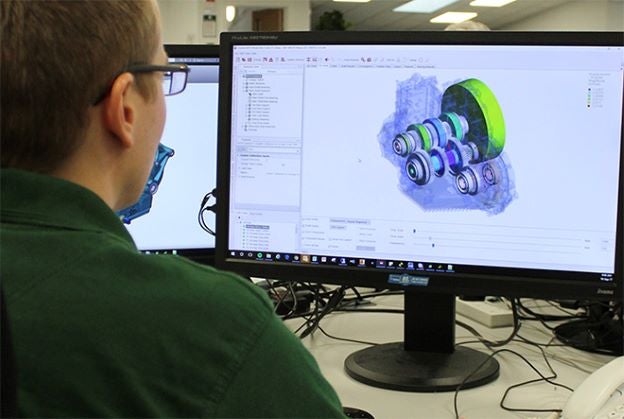
With a limited electrified product range, vehicle manufacturers have been able to optimise their powertrains to suit a particular vehicle segment. However, as manufacturers look to increase their electrified offering key decisions need to be made; create costly but efficient bespoke powertrains for each segment or compromised but cost-effective solutions to be used across the product family. We spoke to Michael Bryant, Principal Engineer at Drive System Design (DSD), to cover the key technical attributes and the sub-system trade-offs to consider, the effect global economies have on the selection process and how answers can be found. DSD is an engineering consultancy specialising in the engineering, development, test and control of electrified driveline and transmission systems.

Why has this become important?
Traditionally, vehicle manufacturers and their suppliers would optimise the performance and efficiency of their individual components and assemblies in relative isolation. While that’s an approach that would appear to be entirely logical and plays to the strengths of the specialists involved, when it comes to electrified platforms, the interplay between components and sub-systems is critical if a manufacturer hopes to achieve their pre-defined targets across a range of attributes. The simplest illustration of that is the interconnect between motor design and battery capacity; specifying an expensive but efficient motor may seem counter-intuitive on a simple cost/benefit analysis, but that may open the door to the use of a battery with a reduced capacity that is cheaper, lighter, and smaller while still achieving a given vehicle range.
By designing a powertrain as a system, components can be optimised to work in harmony with one another. That delivers powertrain configurations that perfectly suit their intended application, and at the lowest possible net BoM (bill of materials) cost.
Given the sheer number of possible permutations, isn’t that rather complex and time-consuming?
Not only that, but it can also lead to biased decision-making, as the process of architecture selection and layout can easily be influenced by pre-conceived ideas about the most appropriate technology, or the outcomes of previous projects.
That’s part of the reason why we developed our Electrified Powertrain Optimisation Process (ePOP) tool. It can generate thousands of powertrain combinations within a pre-defined design space, taking into account vehicle- or subsystem-level parameters such as mass, aerodynamic coefficients, and performance targets. Each is then accurately simulated over a range of applicable drive cycles (in some cases accurate to within 1% of real-world measurements) and compared through intelligent trade-off algorithms against the required objectives, such as cost or range.
Think of it as an intelligent recipe generator; it can very quickly find a hundred different ways to bake a cake from the ingredients you have available, safe in the knowledge that the unworkable options have already been eliminated. But because the process is entirely objective, it will often highlight combinations that might not have been considered otherwise. Someone had to be first to marry chocolate and orange, after all.
With the help of our post-processing interface, it’s easy to drill down through the generated data to quickly establish where the opportunities lie, and to do so in a fraction of the time normally required. By assessing the outcomes against multiple criteria, such as cost or energy consumption, it becomes clear which are the prime candidates to take forward.
How does this process relate to product families?
Logic might suggest that a range of dedicated powertrains, each cost-optimised for their intended application, could be the most effective solution. However, a modular approach creates the opportunity to standardise component sets across powertrains and exploit the economies of scale that result.
For example, a compact crossover and a small hatchback may have sufficient overlap as to be served by the same motor. While that may mean the lighter of two inherits an over-specified part, any increase in BoM cost is likely to be offset by savings within the manufacturing process due to the increased volume, as well as the chance to re-use associated control electronics and software.
By extending ePOP’s methodology across platforms, these similarities can be visualised in the same design space where they become readily apparent. And by allowing greater numbers of powertrain permutations to be played out, these additional combinations can be fully explored, something that wouldn’t have been possible before.
Our analysis may reveal, for example, that a third model, perhaps an executive saloon, could utilise the motor of its siblings within a dual-input transmission design, further capitalising on the available economies. Or that taking an entire powertrain configuration from one segment and applying it to another with a handful of tweaks achieves the desired performance, but with substantial cost savings thanks to the reduced development effort, and a reduced time-to-market, too.
This approach may even reveal the opportunity to use alternative technologies that wouldn’t ordinarily be viable, but become more suitable as volumes increase, spreading the cost across a wider range of applications.
What trends do you see emerging as the market looks to the next generation of electrified platforms?
Recent projects have shown us that multi-speed transmissions deliver greater flexibility when it to comes to achieving performance targets, particularly for heavier vehicles. In fact, broadly speaking you get roughly twice the bang for your buck by putting money into electric drive than you do for the battery, reinforcing the importance of investigating these questions at the system level.
However, as battery costs change and the economics are revised, the optimal solution may snap to an alternative configuration. The advantage of this process is that it simplifies asking the ‘what ifs’ and helps establish where the pivot points lie, even extending as far as to forecast at what point in the future the costs may become more favourable.
How else can the process help OEMs deliver a product cost-effectively?
We’re increasingly seeing opportunities to use the tool to help develop understanding across disciplines and teams. For example, if the battery team prefers to tackle a problem in a way that places additional constraints on the motor team, who would rather resolve the issue with an alternative approach, our tool can analyse the relative benefit or penalty of each change on the powertrain or vehicle as a whole.
By quantifying the value behind each scenario, the trade-offs in powertrain design between the various sub-systems can be revealed and, ultimately, a decision can be made that is demonstrably better for the entire platform.
Similarly, if a proposed change requires significant effort, the likely return can be included in the decision-making process, with the rewards illustrated in black and white. By answering the ‘what ifs’ at a system level – and it’s a system that’s quickly becoming quite complex – the process promotes cross-fertilisation, a sharing of information between experts that previously may have been kept apart.
How can Tier 1s be helped to bring new technologies to market faster?
Performing an analysis at the very earliest stages, almost before the project even exists, helps achieve clarity that can deliver a real head start. For example, as part of an Innovate UK project, we looked at silicon carbide inverter technology which, although very expensive now, is ultimately much more efficient. By forecasting where the tipping point might occur and which applications are likely to benefit the most, the technology can be developed now so that when the economic viability improves, the products have a head start in the market.
The tool also creates opportunities for Tier 1s to assess their products in response to an RFQ (Request for Quote) from a vehicle manufacturer. By evaluating their product or, indeed, a whole product family against the manufacturer’s requirements, they can easily determine their level of competitiveness, or decide whether there is an opportunity for further investment in order to reach something closer to the optimal. The analysis might even reveal a tempting gap in the market.
